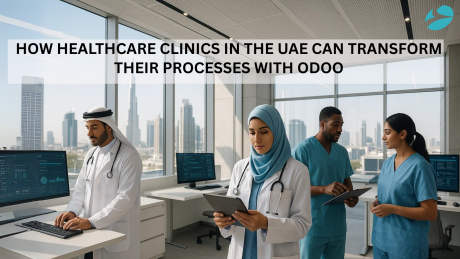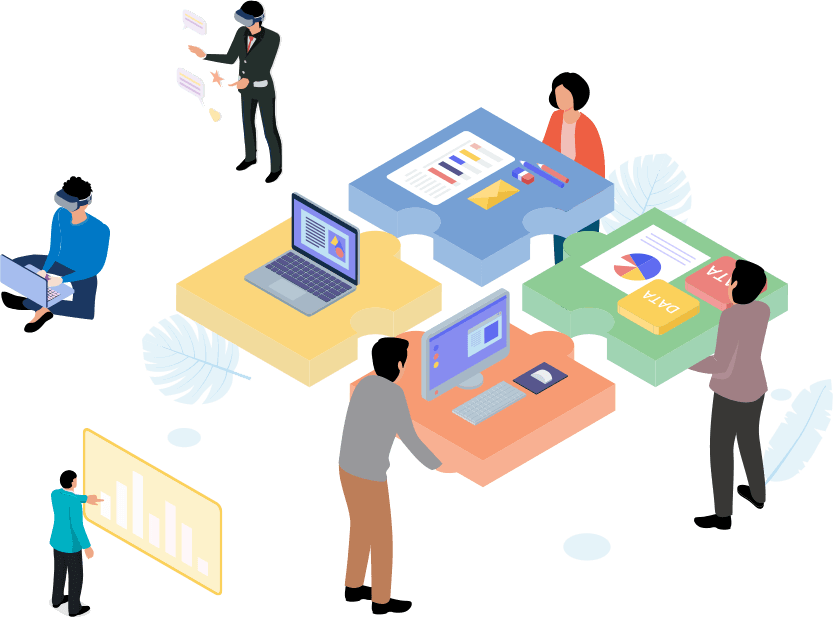2827
A comprehensive guide to ERP and Open-ERP Systems in 2023
5 min read
/ Blog / A comprehensive guide to ERP and Open-ERP Systems in 2023
2827
5 min read
Table of Content
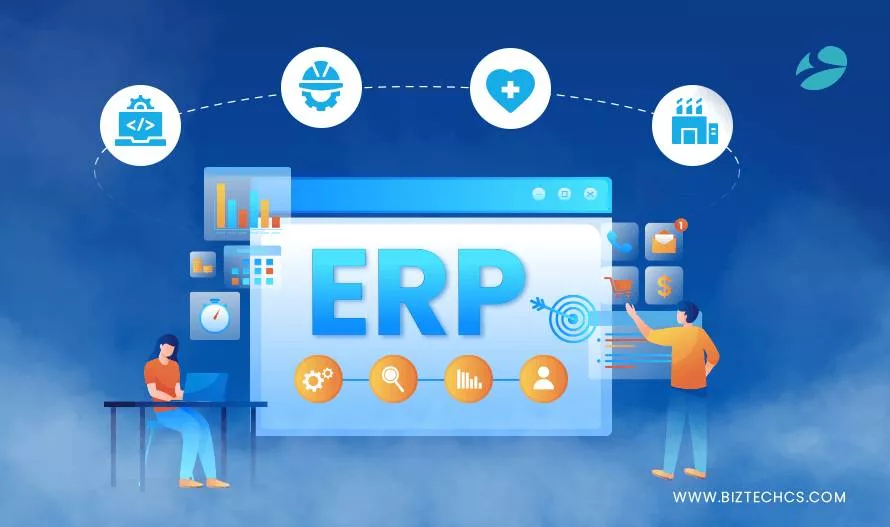
https://dev.biztechcs.com/blog/guide-to-erp-and-open-erp-systems/
In the rapidly evolving digital world, businesses are continuously seeking ways to streamline their operations, optimize processes, and improve decision-making capabilities. Enter Enterprise Resource Planning software (ERP) – a solution that integrates various functions into one complete system, providing real-time insights and enabling effective management of resources and processes.
An enterprise resource planning system is like the central nervous system of a business. It connects different parts of an organization – from sales and customer service to finance, human resources, and supply chain management, ensuring that information flows smoothly and promptly between them. This interconnectedness allows for increased operational efficiency, better inter-departmental communication, and more informed decision-making.
ERP stands for Enterprise Resource Planning. It’s a suite of integrated applications that a company can use to collect, store, manage, and interpret data from various business activities. It facilitates the flow of information between all business functions inside the boundaries of the organization and manages the connections to outside stakeholders.
Enterprise Resource Planning (ERP) systems are multifaceted software applications designed to integrate various functions of a business into a unified system. This integrated approach allows data to flow seamlessly across departments, improving overall business operations, enhancing communication, and enabling more effective decision-making.
Companies buy or upgrade their ERP systems to stay competitive, streamline operations, and facilitate growth. A robust ERP system can integrate disparate business functions, leading to improved data accuracy, enhanced collaboration, and more efficient workflows.
As companies grow, their processes and operations become more complex, necessitating a comprehensive system to manage this complexity. Upgrading ERP systems is also crucial to leverage the latest technologies, ensure system security, and meet evolving business needs.
With an upgraded ERP system, companies can gain improved analytics, adapt to regulatory changes, and provide better user experiences.
Especially with open-ERP systems, upgrades can provide more flexibility and customization options, allowing the software to better align with the company’s unique needs and objectives. In essence, investing in or upgrading an ERP system is a strategic decision aimed at driving business success and future growth.
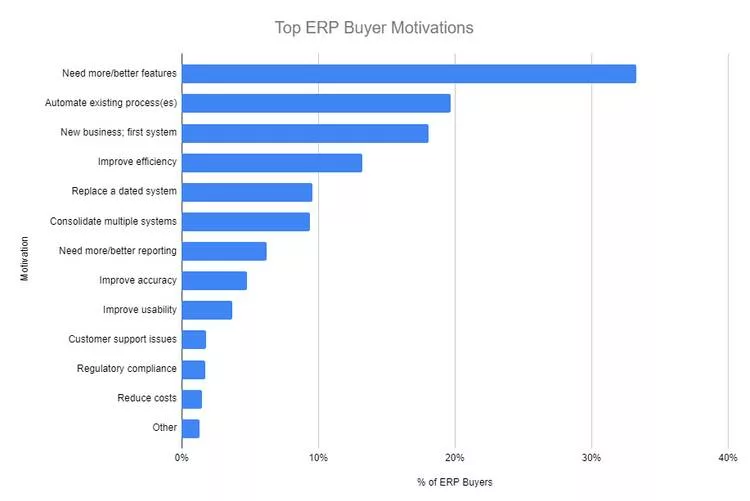
This comprehensive guide will walk you through the world of ERP and open-ERP systems, exploring their features, benefits, and potential challenges. Whether you’re new to ERP or considering a switch to an open-ERP system, this guide will provide the insights you need to make an informed decision. From understanding the basics of ERP and open-ERP systems to implementing them successfully, you’ll find it all here.
As we delve deeper into the world of ERP and open-ERP systems, we’ll help you understand why these tools are not just software, but vital components of successful modern businesses..
An ERP system is composed of several modules, each focusing on a different aspect of business operations. Let’s delve into the core functionalities:
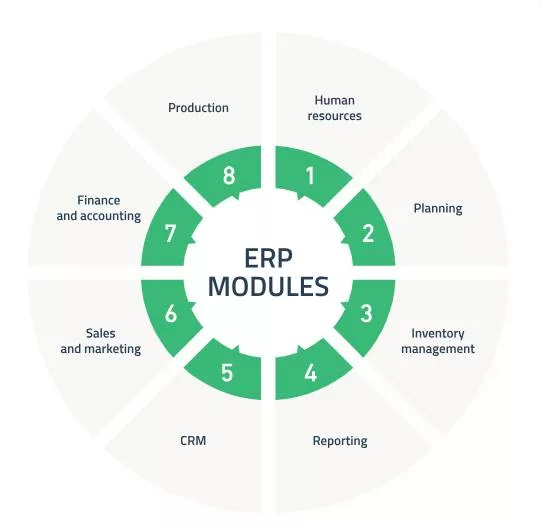
This module automates and streamlines financial management processes. It manages cash flow, tracks income and expenses, creates financial reports, and ensures compliance with financial regulations. It also supports budgeting and forecasting, giving businesses a clearer financial picture and aiding strategic planning.
The sales module helps manage customer relationships, sales orders, invoicing, commissions, and other sales-related functions. It provides visibility into the sales pipeline, helping businesses improve sales strategies and enhance customer satisfaction.
The HR module centralizes employee data, including personal information, job roles, performance appraisals, and payroll details. It supports various HR functions, from recruitment and onboarding to employee engagement and exit management.
This module tracks goods from acquisition to sales. It manages stock levels, purchase orders, warehouse locations, and more. By providing real-time inventory data, it helps avoid stockouts and overstocks, thus optimizing inventory management.
This module streamlines the manufacturing process by managing bill of materials, production planning, work orders, and quality checks. It ensures efficient use of resources and timely production to meet demand.
The supply chain module provides a holistic view of the supply chain by managing suppliers, procurement, and logistics. It supports demand forecasting, optimizes procurement processes, and facilitates efficient distribution.
The CRM module manages all interactions and relationships with customers. It supports sales, marketing, and customer service processes, fostering customer loyalty and improving business growth.
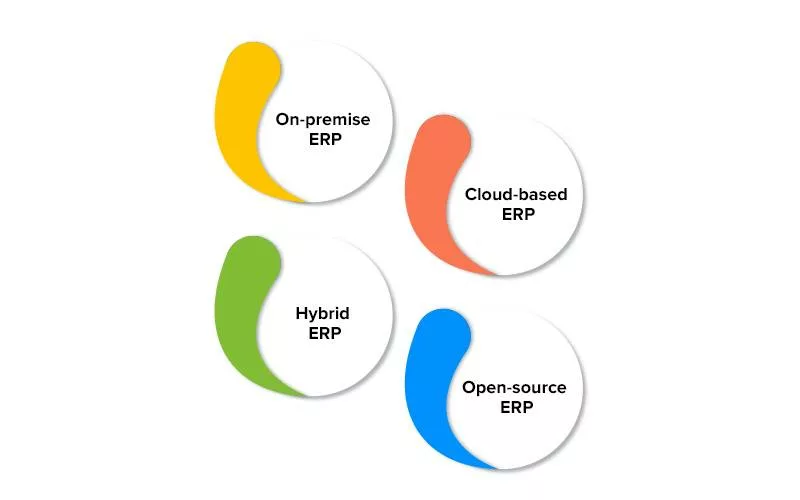
There are many shades to an ERP system. They can be deployed in several ways, each with its unique advantages and drawbacks. An expert ERP partner will help you navigate through the options and choose the one that works best for your business.
Here are some of the most prominent types of ERP systems:
These systems are installed and run on computers on the premises of the organization. They offer a high degree of control and customization but require significant upfront investment in hardware and IT infrastructure. Maintenance and upgrades also fall under the company’s responsibility.
These are hosted on the vendor’s servers and accessed via the internet. Cloud ERP systems reduce the need for significant upfront investment and eliminate the hassle of maintenance. However, they may offer less customization than on-premise systems, and data security depends on the vendor’s protocols.
A hybrid ERP combines elements of both on-premise and cloud ERP systems. Some functions are kept on-site for greater control, while others are hosted in the cloud for cost-effectiveness and flexibility. The challenge is to ensure seamless integration between the two.
Open-ERP systems are open-source software, meaning the source code is freely available. These systems offer great flexibility and cost-effectiveness, as there are no licensing fees, and the software can be customized to meet specific business needs. On the flip side, they require technical expertise for installation, customization, and maintenance.
With time, the traditional ERP systems started getting complex, expensive, and rigid in their operation, making them suitable only for large corporations with big budgets. This is where open-ERP systems come into play, changing the narrative and making ERP solutions accessible for businesses of all sizes.
Open source ERP systems are a game-changer in the ERP landscape. In many ways, they’re the ERP for small business. These systems are flexible, cost-effective, and can be customized to suit the unique needs of a business, regardless of its size or industry. They are based on an open-source model, meaning the source code is freely available for anyone to view, modify, or enhance. This results in a system that is not only customizable but also continuously improved by a global community of developers and users.
One of the major advantages of open-ERP systems is the freedom they offer. There are no licensing fees, and you’re not locked into a single vendor or platform. You can modify the system as your business grows and changes, without the need for significant additional investment.
Plus, the open-source community provides a wealth of resources and support, helping you to get the most out of your ERP system.
Open ERP systems are ERP (Enterprise Resource Planning) software built under an open-source license. Thus, enabling you to access, implement, customize, and even share the source code of your software.
Unlike proprietary systems, you don’t have to pay a subscription fee or a license fee to use or customize the ERP software.
You may have heard of leading ERP systems from SAP, Oracle, and Microsoft Dynamics 365. All of them are proprietary ERP systems and you will need a license to use them.
However, OpenERP systems like Odoo (previously known as OpenERP), ERPNext, OpenBravo, and ApacheOfBiz are available for all and don’t require a license.
Here are some noteworthy advantages of open-source ERP systems and why you may prefer these over proprietary systems.
The initial cost of implementation turns huge when you go with proprietary software. You have to pay a licensing fee to use the software in the first place.
However, the same is not required with open-source ERP software. You can just download the software and start using it. It’s absolutely free.
With open ERP systems, you are given the flexibility to work as you want. You can customize the software per your needs, modify or add new features, or integrate with other systems.
The source code is accessible by all and can be customized completely. Thus, you have the freedom to tweak the ERP system and its functionalities.
The role of innovation in this fast-paced world of technology can’t be denied. And it is often a concern for businesses as open-source software is not dedicatedly handled like proprietary software.
But, they are backed by a huge community of developers and contributors. So, there’s even more scope for rapid development, innovation, and upgrades.
If you are using an open-source ERP system, chances are many people have already found the solutions to the problems you are facing. So, you can implement and build even faster.
Since the source code is publically available, it allows businesses to check the system for security and compliance issues. You can test for any security vulnerabilities available in the system and get rid of those yourself.
It also fosters transparency and builds trust amongst businesses regarding the security of open ERP software.
In terms of scalability, Open ERP systems enable businesses to grow without any limits. Thus, if you happen to observe any growth in users, volume, or transactions, the ERP system can easily adapt to your needs.
Its modular architecture will further support seamless integration with other third-party applications. Thus, you can easily extend your ERP system’s capabilities when it is open-source.
Unlike proprietary software, you don’t have to rely on a single vendor here. You can select any service provider, implementation partner, or consultant, or choose to manage your ERP-related tasks with the help of an in-house team.
Open ERP systems usually have an active community of developers and contributors. These contributors can provide support and even help with various feature updates. They help provide access to various resources, forums, documents, and other collaboration opportunities so you can gain knowledge and resolve the existing issues with your ERP system.
Read Also: ERP for Automotive Industry
Although there are numerous benefits associated with the use of open ERP systems, it also brings a certain set of challenges. Here are some of those:
An ERP system in itself is complex with multiple modules and features. And an open-source ERP is no different. The wide range of features often makes the software difficult to navigate and use.
Besides, the various integrations and extensive customization make it even more challenging to deal with the software. So, if you aren’t tech-savvy, you may find the ERP software difficult to manage. In fact, learning to work with the software and training your employees could be a challenge.
You will need technical skills to install, implement, customize, and deploy the ERP software. In fact, you will need professional assistance for managing the ERP software and updating it from time to time.
If you are expecting industry-specific features in your open ERP system, you might feel disappointed. However, you can always customize features as per need.
The resources and support you get with open ERP systems depend entirely on the open-source community. However, the community dynamics can change over time. There may not be as many dedicated contributors in the future as there are today and you may have to struggle to find the right solution to your ERP problems.
In essence, the advent of open-ERP systems has democratized access to ERP software, enabling small and medium-sized businesses to reap the benefits that were once reserved only for large corporations. But like any business decision, choosing an open-ERP system requires careful consideration of your business needs, resources, and long-term goals.
A powerful open ERP system can ease your burden in many ways. You can reduce operational costs, improve productivity, attract more visitors, and aim for higher conversion rates.
In this race, Odoo ERP is a popular name that businesses often come across. Here’s a closer look at Odoo as an ERP software.
Odoo, earlier known as OpenERP, was founded by Fabien Pinckaers in 2005. It is a suite of business applications with various kinds of modules like ERP, CRM, sales, eCommerce, HR, manufacturing, accounting, purchase, and warehouse management.
With over 150 themes to choose from and over 14,000 third-party applications and Odoo apps, the ERP software presents you with immense possibilities.
While the Odoo Community version is available free of cost, the Odoo Enterprise edition comes at a cost with advanced features and functionalities. Let’s look at some of the reasons why Odoo ERP is the best choice for you.
When the likes of SAP and Oracle ERP systems dominated the market, it was very difficult for a small or medium-scale business to optimize their processes by implementing ERP. However, the introduction of OpenERPs like Odoo brought new hopes for them.
Odoo, with its Community edition, is one of the most affordable ERP systems out there. You get to use the software free of cost (though there are feature limitations), customize it, and even integrate third-party applications.
The yearly plan for Enterprise Edition Standard starts from $24.90/user/month and the Custom plan starts from $37.40/user/month.
Streamline, automate, and collaborate. These are the key pillars of Odoo ERP. In a business setup, you have multiple verticals to manage right from sales and manufacturing to marketing and HR.
It is easier to streamline all your processes and manage them from a single dashboard with the help of Odoo. As for automation, you can reduce the time and effort spent on monotonous, critical, and repetitive tasks like creating invoices, tracking inventory, etc.
You can access important documents and collaborate seamlessly with features like Odoo mobile and cloud-based services.
While there’s no doubt ERP can automate your processes and improve productivity, some systems might require time to get used to. However, Odoo’s seamless user interface makes it seamless for a user.
You can easily use the Odoo dashboard to optimize your processes and even train your employees to work with the software.
With real-time insights and access to data, businesses like yours can make informed decisions. For instance, metrics on the target audience, website traffic, conversion, retention rate, etc. can help make informed sales and marketing decisions. Quick and accurate decisions can help refine your business processes.
What makes OpenERPs like Odoo flexible and apt for businesses of all sizes? Its customization capabilities!
You can customize the ERP system to your unique needs. A small-scale business can use Odoo Studio to custom-build an ERP system they want. Similarly, there are over 14,000 Odoo apps to choose from. Medium-sized businesses can integrate those to expand their capabilities.
And with Odoo’s huge community of professional integrators, large-scale businesses can also extend their ERP capabilities significantly.
I. Good Heart Catering.com
The LA-based catering services company wanted to build a unique and engaging website to take their customer’s catering orders. BiztechCS helped them build an engaging and easy-to-navigate website with the help of Odoo eCommerce.
II. Intervlag
We helped Intervlag, a Netherlands-based flag manufacturing company build and manage their website with Odoo. . Our team helped migrate their existing Odoo website to the latest Odoo version and were able to optimize their supply chain processes seamlessly.
To stay ahead of the curve, you need to be able to streamline your processes and manage your resources intelligently. An ERP system can help you with that.
But, to unlock the maximum potential of your business, it is important that you choose the right ERP software for your business. You need an ERP system that aligns with your business goals, unique needs, future prospects, and industry demands.
So, you must understand your business requirements and make an informed decision.
While these are some of the key features your ERP must have, let’s look at the key modules that an ERP system typically includes.
Before we get to any factors that might influence your decision, you must first create a team of people who are going to decide. The team can include CTOs and CEOs, IT team players, and key stakeholders who will be responsible for using the application.
Since they will be well frequented about the challenges and inefficiencies in the current business setup, their input will be valuable.
Since you are considering switching to a modern ERP system, you might have observed the inefficiencies and drawbacks in your legacy system. There may be apps that you no longer use. Or, your system may have security issues and silos that need to be addressed.
Make a note of all things that need to be removed, resolved, and kept. It will ease your ERP implementation process.
Each business has its own set of requirements. While manufacturing businesses may find supply chain management modules more useful, software industries may find CRM modules and HR modules more useful.
You have to think of all the modules that you will need and can prioritize them. It is always advisable to not invest too much in modules that you may not need. Choose your modules smartly and customize them to your needs.
Why is ERP implementation necessary for your business?
Well, there are several reasons. Reasons like reduced costs, improved productivity, business growth, higher conversion rates, and so on.
You must set clear goals about these benefits that you expect to achieve. It should help you understand if the ERP software can help achieve those goals. You will also be able to track with the help of metrics.
You should always choose an ERP software that is compatible with your current infrastructure. If there are too many differences and compatibility issues, you will have to spend extra effort and funds for the migration that might not be as feasible.
Do you have an in-house team that can take care of the ERP implementation and maintenance process? If yes, you should consider their expertise and decide the type of ERP software you want to implement.
Or, you may outsource your ERP implementation and deployment tasks to a professional team and get the job done. In any case, you should consider your team’s expertise and then decide on the software.
When you are selecting ERP software, it is important to know about the total cost of ownership from the start. Otherwise, you may end up with software that is difficult to maintain within your budget.
So before you come to a decision, enquire about all the hidden costs of ERP implementation such as testing costs, ongoing and maintenance costs, data conversion, license costs (in case of proprietary software), customization costs, training costs, customer dissatisfaction, etc.
Deciding on an ERP system is one thing, and implementing it is another. You don’t just look into the features and benefits offered by the new ERP system but also have to consider several other factors.
Here are some factors for you to consider:
Conduct a complete analysis of your organization’s health (drawbacks, loopholes in processes, pain points, etc.) across various departments. The key stakeholders should be able to help in this context. It will help with the analysis of new requirements in your organization.
Based on the observation, you need to clearly define your organization’s goals. Your goals can be streamlining processes, improving productivity, improving data visibility, or increasing conversion rate. In any case, make sure to define realistic and achievable goals clearly using metrics.
Before you implement an ERP system to your business setup, you must take care of any inaccuracies present in your data. Thus, make sure to include data validation, cleansing, and mapping processes before you migrate any data to the new ERP system.
Are you using a legacy system? Or, do you use any ERP?
In any case, you alongside your team members are well-familiarized with the setup. Understandably, a change in the system is bound to bring inconvenience. Thus, the need for a change management strategy is inevitable.
To ensure user acceptance and smooth adoption, you need to tell the team about your new ERP’s benefits and even train them. It will elevate your productivity multifold.
Your job is not finished once you implement an ERP system. Instead, you have to always check the system for errors and inefficiencies and get rid of them. So, once the implementation is done, you will have to plan for continuous improvement, support, and maintenance of the system. So, this is something you should keep in mind from the beginning.
Besides choosing the right ERP system, there are several other considerations that will ease the implementation process.
Do you have an in-house team who can take care of your ERP implementation needs?
If yes, well and good! If not, it’s about time you start looking for one.
Your ERP implementation partner will be responsible for mapping your old processes with the new ones. They will also take care of any customizations that you want with your ERP or any integrations they need to do.
Thus, hire a professional ERP partner for the job. If you are choosing OpenERP Odoo for your business needs, choosing an Odoo partner can benefit you the most.
Here are some things to consider while hiring ERP implementation partners:
When implementing the ERP system, there may arise functional or integration issues. If you happen to face a similar problem, it is important to resolve these errors before your software goes live.
Otherwise, you and your employees may experience a fault in some features. To ensure that’s not the case, perform user acceptance testing, performance testing, and system testing.
An important part of ERP implementation is to educate and train all employees about the intricacies of working with Odoo. The training has to be provided to users at every level of the organization based on the extent of tasks they have to perform.
You can offer workshops, training sessions, and user documentation to the various employees and users. Often, the ERP implementation team also helps with training and support. So, you can ask them if that option is on the table or not.
You can also set up a support portal for these users where they can drop queries and issues for you to respond to and address.
Investing in an Enterprise Resource Planning (ERP) system is a significant decision for any business. So it is incredibly important to ensure that you get the most out of your ERP investment. Here’s an image from a study by Panorama that lists out all the areas that benefited the most as a result of ERP implementation.
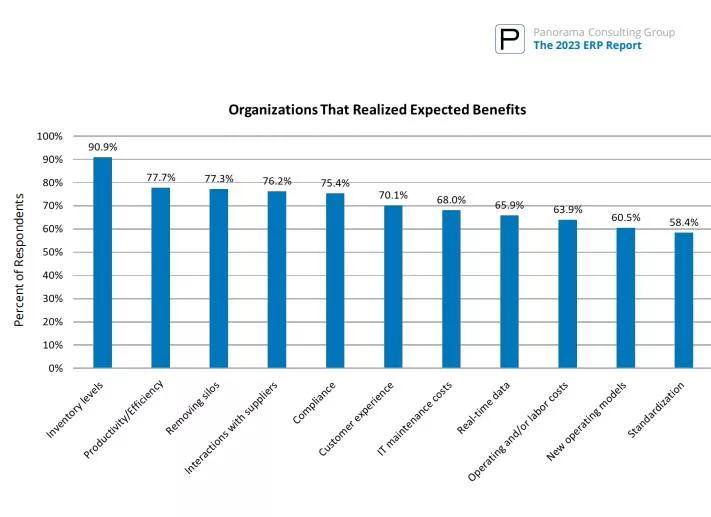
To truly maximize your investment and reap the full benefits of ERP systems, you need to focus on effective training, user adoption, regular maintenance and updates, and, specifically for open-ERP systems, leveraging the flexibility and community support. Here are some strategies to help you get the most out of your ERP system.
Training is a critical component of successful ERP implementation and use. As ERP systems are complex and multifaceted, understanding the intricacies can be a challenge for the workforce. Hence, investing in comprehensive training programs can help ensure that your team is equipped with the necessary skills to use the system effectively.
End-User Training: Provide in-depth training to end-users covering all the modules they will use. Make sure they understand how their individual tasks tie into the larger business processes managed by the ERP system.
Continuous Learning: Keep your team updated with new features and functionalities through continuous learning programs. Changes and updates are common in ERP systems, particularly in open-ERP systems due to their open-source nature.
Role-Based Training: Customize training based on the roles and responsibilities of different team members. Each role may interact with the ERP system differently, so specialized training can increase effectiveness.
High user adoption is a key indicator of a successful ERP system. But getting there isn’t always straightforward.
User-Friendly Interface: Choose an ERP system with an intuitive, user-friendly interface. This can significantly increase user adoption rates. For open-ERP systems, consider working with your development team or a third-party developer to customize the interface to suit your team’s needs.
Support and Assistance: Provide consistent support and assistance during the initial stages of implementation. This helps users become comfortable with the system and can reduce resistance to change.
Empower Users: Empower users by involving them in the implementation process. This can foster a sense of ownership and boost their commitment to the system’s success.
Regular maintenance and updates are crucial to keep your ERP system running smoothly and securely.
Regular Updates: Keep your ERP system updated to benefit from the latest features and security enhancements. For open-ERP systems, monitor the community discussions and developer releases for update news.
Scheduled Maintenance: Schedule regular maintenance checks to ensure the system is working efficiently. This can include checking for bugs, cleaning up the database, and optimizing system performance.
Backup and Disaster Recovery: Implement a robust backup and disaster recovery plan to protect your data. This is crucial for both on-premise and cloud-based systems.
Open-ERP systems, with their open-source nature, offer unique opportunities to maximize your ERP investment.
Customization: Leverage the flexibility of open-ERP systems by customizing the software to perfectly suit your business processes. Whether you need additional modules or modified workflows, open-ERP systems can accommodate these changes.
Community Support: Open-ERP systems are backed by a global community of developers and users. Take advantage of this community for support, learning, and troubleshooting. Participate in forums, webinars, and other community events.
Integration: Open-ERP systems can integrate with various other systems and software. This ability to connect different parts of your IT infrastructure can greatly enhance operational efficiency and data accuracy.
As we stand on the threshold of an era marked by rapid digital transformation, the world of Enterprise Resource Planning (ERP) is also evolving at a staggering pace. Powered by the latest technologies and driven by the need for flexibility and adaptability, the future of ERP and open-ERP systems is poised to redefine the way businesses operate. Here are some of the domains that will contribute to
AI and ML have started to penetrate the ERP space, ushering in a new age of intelligent automation and predictive analytics. ERP systems in the future will likely incorporate more AI and ML capabilities to offer smart recommendations, automate routine tasks, and enhance decision-making. For instance, AI-powered ERP can help in predicting customer buying patterns, automating inventory management, or forecasting financial trends. Open-ERP systems, with their flexible nature, are especially suited to integrate such cutting-edge technologies.
The IoT has the potential to transform ERP systems by integrating physical devices with digital processes. By connecting devices and machinery to the ERP system, businesses can collect real-time data on their operations, enabling precise tracking, monitoring, and management. This can drive efficiency, particularly in sectors like manufacturing, logistics, and supply chain management. The open-source nature of open-ERP systems can facilitate smoother integration with IoT devices.
The shift towards cloud and hybrid ERP systems will continue to gain momentum. These systems offer flexibility, cost-effectiveness, and the ability to access the system from anywhere, anytime. They also facilitate easy scaling as the business grows. Hybrid ERPs, combining the strengths of both on-premise and cloud ERP, are also on the rise. One of the primary benefits of cloud ERP Software is that they offer a balanced approach, allowing businesses to maintain sensitive data on-premise while leveraging the cloud for other operations.
The emphasis on user experience is becoming more pronounced in ERP system design. Future ERP systems are likely to have more intuitive and user-friendly interfaces, with a focus on personalization. Improved UX can increase user adoption and productivity, thereby enhancing the overall effectiveness of the ERP system. Open-ERP systems, with their flexibility, can be modified to offer an enhanced, customized user experience.
As businesses continue to realize the importance of data-driven decision-making, ERP systems will likely focus more on advanced analytics and reporting capabilities. They’ll offer real-time insights and interactive dashboards to make data more accessible and understandable. Open-ERP systems can easily integrate with advanced analytics tools, providing businesses with powerful insights.
The future of open-ERP systems looks promising. Their flexibility, cost-effectiveness, and community support make them an appealing choice for businesses of all sizes. Moreover, their open-source nature allows them to quickly incorporate new technologies and trends. As more businesses recognize these advantages, the adoption of open-ERP systems is likely to rise.
The journey of understanding and maximizing your ERP investment is one of continuous learning, adaptation, and innovation. ERP systems, especially open-ERP systems, have proven to be invaluable tools that can streamline operations, enhance efficiency, and drive strategic decision-making in businesses of all sizes and industries.
From understanding the core functionalities of ERP systems to the different types of ERP deployments, we’ve delved into the intricacies of these complex software applications. We’ve explored strategies to maximize your ERP investment through effective training, user adoption, regular maintenance and updates, and, specifically for open-ERP systems, leveraging their flexibility and community support.
Looking ahead, the future of ERP and open-ERP systems is exciting and promising, shaped by trends such as artificial intelligence, the Internet of Things, cloud computing, and a strong emphasis on user experience. Open-ERP systems, in particular, with their adaptability and open-source nature, are well-equipped to incorporate these trends and innovations.
In conclusion, whether you’re a small business just starting your ERP journey or a large corporation looking to enhance your existing ERP system, the power and potential of these systems are undeniable. Embrace the possibilities offered by ERP systems, keep abreast of the latest trends and developments, and leverage this powerful tool to drive your business towards success. Remember, the true power of ERP lies not just in the software itself, but in how effectively it is implemented and utilized within your organization.
Your ERP system can be more than just a tool; it can be a strategic asset that empowers your business to reach new heights of efficiency, growth, and success. As you embark on or continue your ERP journey, remember this: the path may be complex, but the rewards are well worth the effort.
